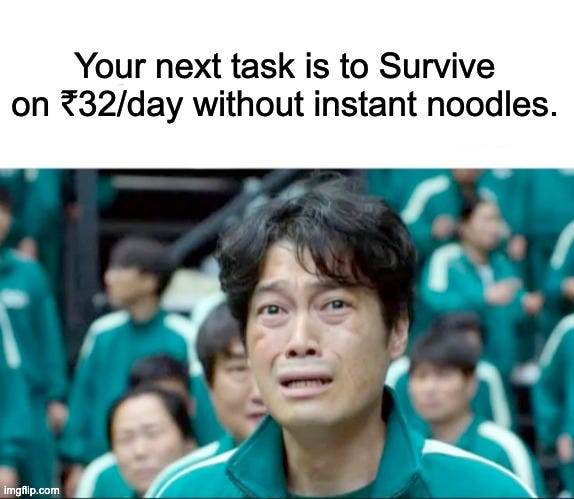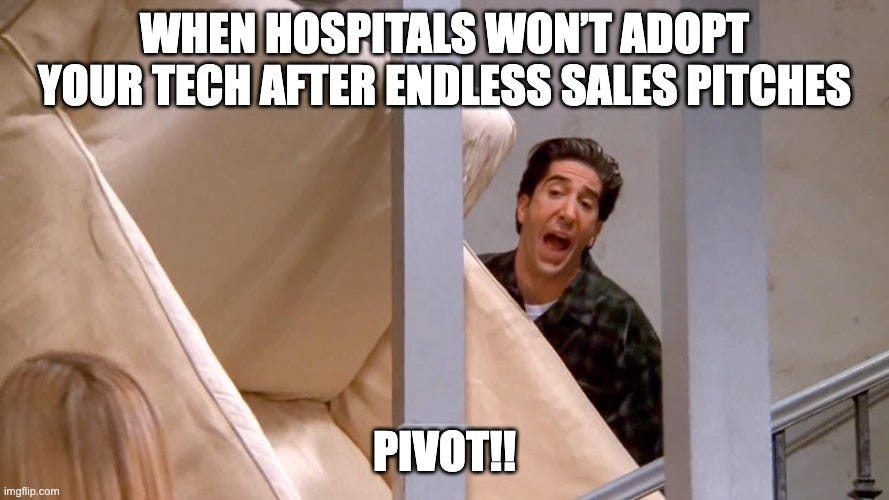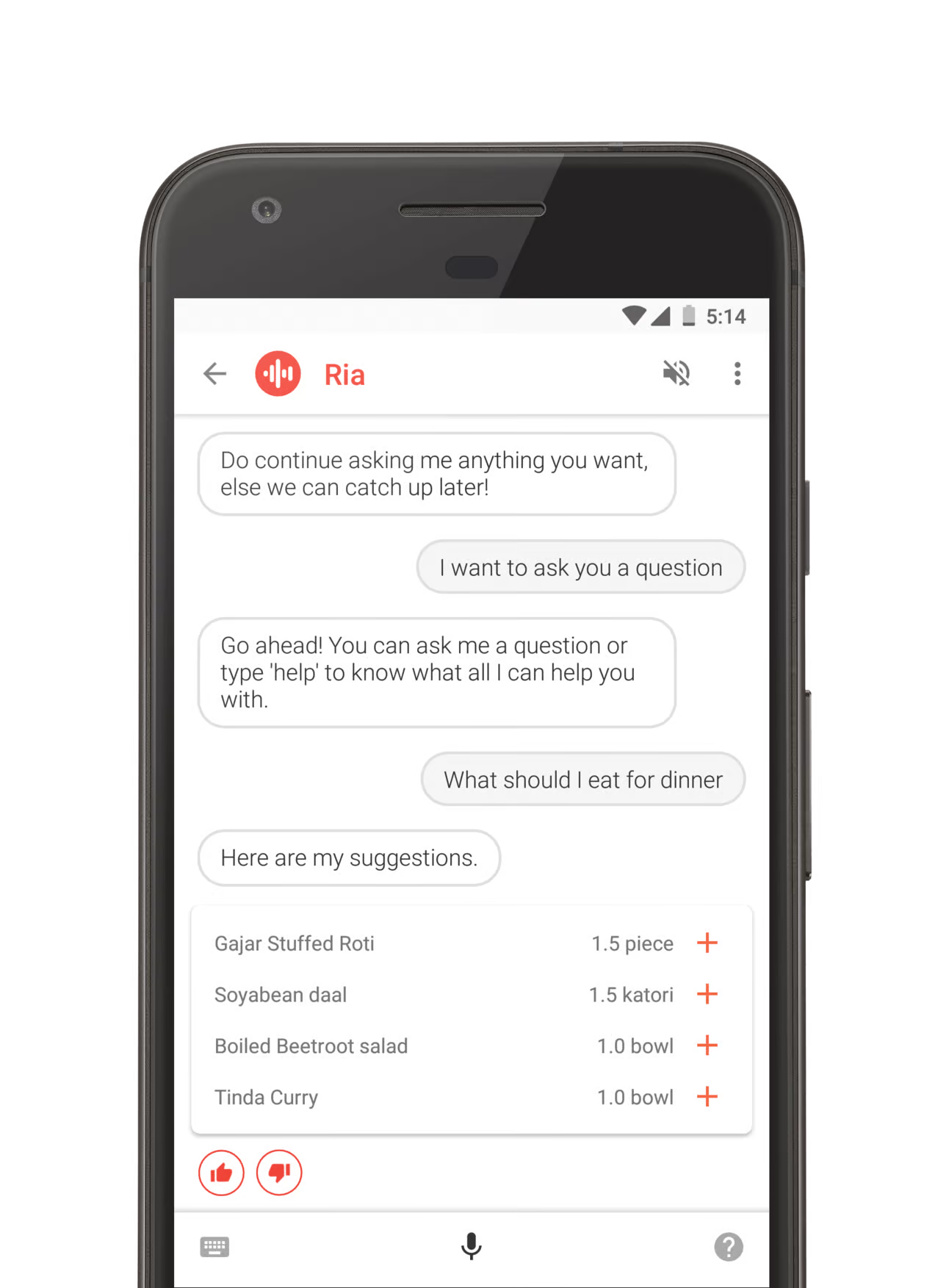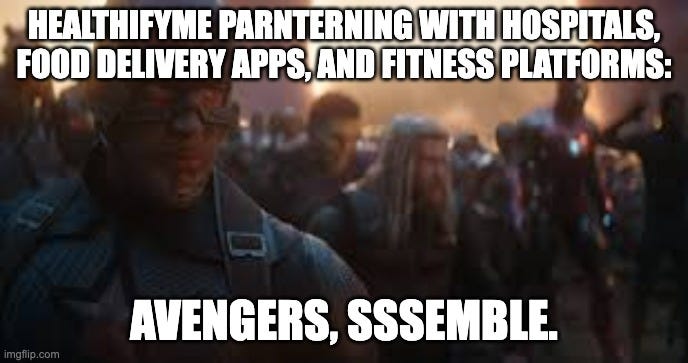How HealthifyMe Tracked Its Way to 40 Million Users
From an Excel sheet to an integrated ecosystem, let’s explore how HealthifyMe is digitizing wellness.
In 2010, Tushar Vashisht left a promising career at Deutsche Bank in Singapore to return to India and work on Aadhaar, the country’s digital identity project. His involvement in the public distribution system, where he managed food and nutrition data, exposed him to the harsh realities faced by many in India who struggle to meet their nutritional needs with limited resources.
Determined to experience these challenges firsthand, Tushar and his roommate, Mathew Cherian, decided to live on ₹100 a day—the average daily income in India—for three weeks, later reducing it to ₹32, the official poverty line.
With limited funds, Tushar tracked every meal’s calories and nutritional content on an Excel sheet. But tracking Indian meals was far from simple- there was no reliable database for local dishes. This lack of information sparked an idea that would change everything.
Over time, they built an Excel sheet with their experiment data that quickly gained traction among friends and family with how precise the data was.
At the time, India had 60 million diabetics and over 150 million hypertensive people, and most of the problems stemmed from a lack of awareness of what people were eating and how much energy they burned daily. Realizing the untapped potential, Tushar and Mathew wanted to build a public tool to help people manage their diets, a move that would later become HealthifyMe’s foundation.
“As we built that website, people started loving it and wanted more. Our goal was to first create a nutrition tracker for India. Maybe if we could help people track their calorie count, we could help people improve.”
— Tushar Vashisht, Founder, HealthifyMe.
By 2012, the duo had built a basic website, locked in $0.2M in angel funding and set the stage for something much bigger.
A Tale of 2 Pivots
In the early years, HealthifyMe was focused on building a B2B health-tech platform for hospitals and medical institutions. The idea was to enable doctors to recommend personalized meal tracking for patients.
However, selling to hospitals meant long sales cycles, slow decision-making, and limited tech adoption. Indian doctors at the time were sceptical about calorie tracking, and the company could only secure partnerships with 8 hospitals.
Moving from a B2B to B2C Business
By late 2013, they faced a harsh truth: the B2B model was unsustainable.
The team decided to take the tracker to consumers directly (B2C) by building a mobile app that would allow users to track their food and fitness independently.
The response was overwhelming—within months, they crossed 50,000 downloads.
They further scaled the app by introducing the #Swasthbharat campaign, greenlighted by India’s then health minister, offering products and services of partner brands worth ₹1,000 to users who committed to health goals, boosting acquisition to 500,000 users.
Alongside B2C, HealthifyMe developed a B2B2C platform, enabling corporations to offer its services as part of workplace wellness programs. While the corporate model still generates less than 20% of revenue, it provides access to a broader user base and built long-term brand equity.
Building a Sustainable Business Model
Despite having a loyal user base, there was no revenue model in place yet, and the company ran out of funds. Employees were unpaid for 3 months, yet the team stayed committed, sure they had struck gold.
Looking at the broader health apps space, MyFitnessPal was a massive outcome for its founders when Under Armour bought it for $475M. But the app was later sold to a PE firm at a loss of $345M, showing how tough the space was even for a leader.
With funds dwindling and survival at stake, Tushar and his team had no choice but to shift from a “product-first” mindset to a “business-first” approach.
After dozens of revenue experiments, the team hit upon a winning formula: freemium subscriptions with expert coaching services.
Free Tier: Basic food and exercise tracking.
Paid Subscriptions: Personalized plans from certified nutritionists and fitness coaches.
Onboarding Certified Coaches on the lookout to grow their clientelle
Nutritionists, fitness trainers, and wellness coaches were initially hesitant to join HealthifyMe due to the nascent state of digital health coaching in India. However, HealthifyMe’s unique approach, transparent policies, and career growth opportunities attracted top coaching talent.
Access to a Growing Client Base: Coaches saw the potential for a steady stream of clients through HealthifyMe’s rapidly growing user base. Unlike freelance consulting, HealthifyMe guaranteed client engagement through its app.
Flexible Work Environment: The platform offered remote working, flexible schedules, and client management tools, making it easier for certified professionals to balance work and personal life.
The model clicked.
By 2016, they raised $6M in Series A funding from investors after achieving ₹20 lakh in monthly revenue. However, even with paying users, gross margins stalled at 26%, leaving profitability elusive.
“Who would fund a 26 per cent gross margin business, which is not very scalable, lacks a technology-led model, and was still service-oriented.”
— Tushar Vashisht, Founder, HealthifyMe, explaining why it was still hard to get wider backing and bigger commitment.
AI, AI, AI
Inspired by Iron Man’s JARVIS, the team dedicated a huge chunk of the fresh funding towards developing Ria, an AI-powered health assistant that launched in 2017- long before ChatGPT’s rise.
Trained on HealthifyMe’s 150 million tracked meals (20 billion+ macro/micronutrients) and 10 million message exchanges (1 billion+ word) between coaches and clients, Ria provided instant, accurate answers to user queries. It helped users set goals, track calories, and adjust diets in real-time.
This data-driven, personalized guidance was the company’s silver bullet. And it was available in 10+ languages. Ria-powered coaching became HealthifyMe’s defining product, creating an AI-driven moat competitors couldn’t replicate.
Impact of Ria:
80% Coach Bandwidth Freed Up: Ria took over routine tasks like FAQs, daily check-ins, and standard meal recommendations, allowing human coaches to focus on complex cases.
50% Subscription Allocation: By 2019, nearly half of HealthifyMe’s subscribers were choosing a “Ria-only” subscription, significantly reducing operating costs and boosting gross margins to over 70%.
HealthifyMe had graduated from a services to a product-first, services-second company, all while Ria improved the app’s net promoter score (NPS) from around 50 to above 70 in a year.
In 2023, HealthifyMe launched another AI-powered tool Snap, an AI-powered food recognition tool trained specifically on Indian dishes. Snap could accurately identify meals from puris to dosas through photos, logging not just calories but macros instantly. The tool also gives suggestions on how to make the meal more balanced, further enhancing the app’s appeal and functionality in it’s main geography- India.
Creating an Integrated Ecosystem
The team understood that to scale meaningfully, it couldn’t just be a nutrition tracker. The company expanded into a full health-tech ecosystem covering fitness, mental health, and chronic disease management.
Product Diversification
HealthifyPro
Introduced hardware like CGMs (Continuous Glucose Monitors) and Smart Scales, offering real-time metabolic insights to expand Total Addressable Market (TAM), and boost revenue.
Added blood-test-based metabolic panels, enabling comprehensive health reports from over 80 diagnostic tests.
Smart Plans & Meal Tracking: Tailored diet plans powered by user data and Ria’s intelligent coaching system. The personalized experience led to 15x engagement rates compared to industry standards.
Mental Health Programs: Recognizing the mind-body connection, HealthifyMe expanded beyond fitness and nutrition by launching mental wellness services integrated directly into the app. This strategic move allowed the company to tap into a fast-growing wellness market often underserved by traditional fitness apps.
Healthify Studio: During the COVID-19 pandemic, a live online workout platform was launched to replicate in-person fitness sessions (Cult.fit’s recorded sessions were launched during the same time). With interactive live classes and personalized fitness plans, Healthify Studio became one of the company’s most successful growth levers.
Pandemic-driven fitness consciousness led to subscription spikes and increased retention, helping HealthifyMe cross 35 million users globally.
As a part of the plan to create an ecosystem for consumers looking for healthy living, the company is also experimenting with healthy food, which includes staples, snacks, and supplements.
Endorsements & Partnerships
HealthifyMe’s growth wasn’t just product-driven—it was partner-powered.
Celebrity Campaigns: Brand ambassadors like Farah Akhtar, and Sara Ali Khan help boost visibility through outdoor, print and tv ads, and improve user acquisition.
“Fitpicks” with Swiggy: Users can choose to order healthy meals from curated restaurants within Swiggy.
Milkbasket: Grocery orders through Milkbasket made healthy eating more convenient.
Fitternity: Provided access to 12,000+ gyms and fitness studios encouraged active lifestyles.
Looking Ahead: Healthifying a Billion People
After dominating the Indian Health-tech market and establishing a strong foothold in the South East Asia and, HealthifyMe is now setting its sights on high-value global markets. With a significant portion of its revenue still coming from India, the company identified an untapped opportunity in regions with higher disposable incomes and premium health-conscious consumers.
Backed by the latest $45M funding round in 2023, HealthifyMe is advancing its industry-leading AI capabilities while expanding into the US and Europe—the world’s most lucrative health and fitness markets. The team has already completed successful alpha tests in the US and is gearing up for a major launch in the coming months.
The company’s strength lies in its ability to adapt- customizing its services for different languages, food cultures, and fitness habits. This cultural sensitivity will enable HealthifyMe to become a truly global player in the health-tech space.
“After delivering outcomes at scale in India with our unique blend of AI and human coaching, we’re thrilled to bring this approach to the US, the world’s largest health and fitness market.”
— Tushar Vashisht, Founder, HealthifyMe.
The goal remains to “healthify a billion people”. And to be profitable doing it - HealthifyMe is on track to become EBITDA-positive by the end of FY25.
Thanks for reading! 😄
One Step Ahead is a publication by Plotline. With this series, we plan to give you a behind-the-scenes breakdown of the product and growth strategies that have propelled consumer apps to where they are today.







